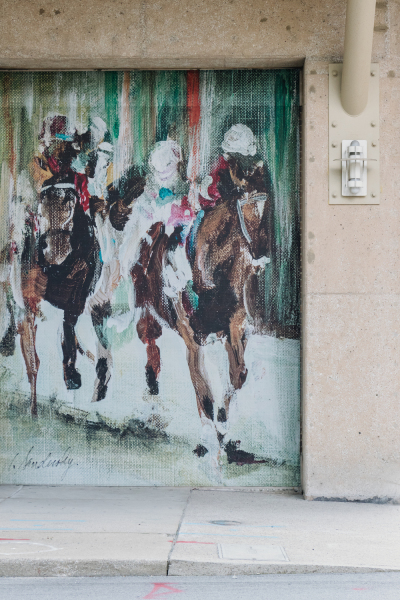In Louisville, historic churches overlooked

Most visitors to Louisville, Kentucky, don’t come to see historic churches.
Admittedly, the big draws are the Kentucky Derby and pretty much everything bourbon. But beyond horses and distilled spirits are more than a half-dozen churches from the late 1800s and early 1900s. Many are listed on the National Register of Historic Places.
Think the kind of churches no longer built today.
My trip to Louisville started after flying into Muhammad Ali International Airport, a surprisingly nice and efficient airport with good connections to other parts of the country. I soon found myself at the Omni Hotel, which stands across Second Street from Christ Church Cathedral (Episcopal).
The cathedral, seat of the Episcopal bishop of Kentucky, looks Romanesque. However, the appearance is deceiving.
The west front, erected around 1870, is actually just a facade. The rest of the edifice is brick and almost entirely from the 1820s. The original architecture was essentially a meeting house-style church, a design pretty typical until the revival of Gothic and Romanesque styles came to dominate ecclesiastical architecture in the second half of the 19th century.

A short walk away is Old Louisville.
Here on several blocks of Third and Fourth streets are churches representing mainline Protestant denominations and other sects that collectively dominated religious life at the turn of the last century. Mixed among the houses of worship are townhouses designed in the Richardsonian Romanesque, Queen Anne, Italianate and other architectural styles fashionable among upper-class and upper-middle-class city dwellers in the late Victorian and early Edwardian eras.
One of the first churches in this neighborhood is First Unitarian Church (Unitarian Universalist), which juxtaposes new and old as it was rebuilt within the original Gothic revival walls following a fire in 1985. Next door is Calvary Church (Episcopal), founded by dissenting Methodists, with its 250-foot-tall spire. Just across the alleyway is a textbook classical revival building that today houses Greater Bethel Temple Apostolic Church (Pentecostal), but originally served as a Reform Judaism synagogue.
Further down Fourth Street on the edge of the 17-acre Central Park is the perpendicular Gothic-inspired West End Baptist Church (Southern Baptist). Built for Episcopalians, it is by the St. James-Belgravia Historic District. This is where the St. James Court Art Show is held every October.
About 2 miles away is First Lutheran Church (Evangelical Lutheran Church in America). Here, the limestone west front has tracery — the stone framework supporting glass in a window — reminiscent of the flamboyant style seen in France and elsewhere in Europe.
An honorable mention goes to Immanuel Baptist Church (Southern Baptist) for its beaux-arts exterior.
If you go
Consider a walking tour from either Louisville Historic Tours or the Historic Old Louisville Visitors Center. Another great way to see the cityscape is a sunset riverboat cruise on the Belle of Louisville, which feels like something out of a Mark Twain novel.
Don’t stay at Hotel Distil, part of Marriott’s upscale Autograph Collection brand. I really wanted to like the hotel, but low standards and a dirty room were too much to overlook. Instead, book the Omni, which features an incredible resort-esque rooftop pool.
Eat at Bob’s Steak & Chop House; Patrick O’Shea’s, an elevated Irish pub; or, when normalcy returns, the AAA four-diamond English Grill at The Brown Hotel.
While in Louisville it is also worth visiting the Frazier History Museum, Kentucky Derby Museum and Speed Art Museum.
Follow @dennislennox on Instagram and Twitter.
Dennis Lennox writes about travel, politics and religious affairs. He has been published in the Financial Times, Independent, The Detroit News, Toronto Sun and other publications. Follow @dennislennox on Twitter.





















